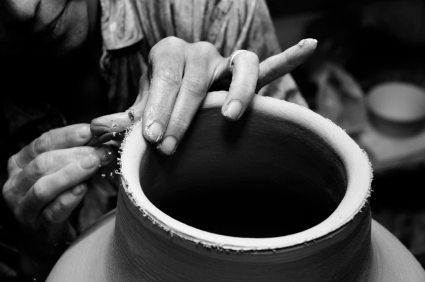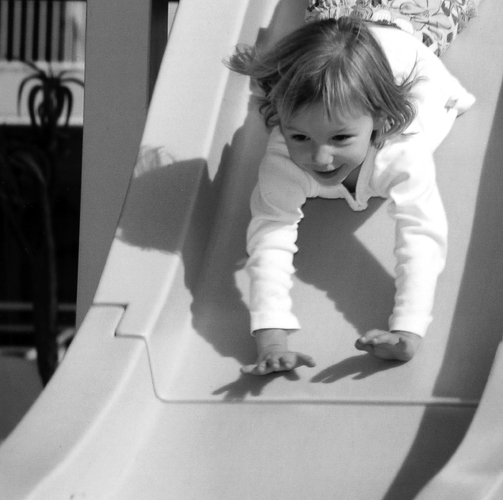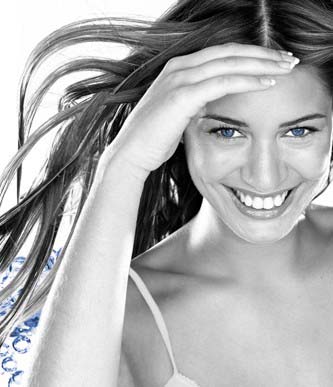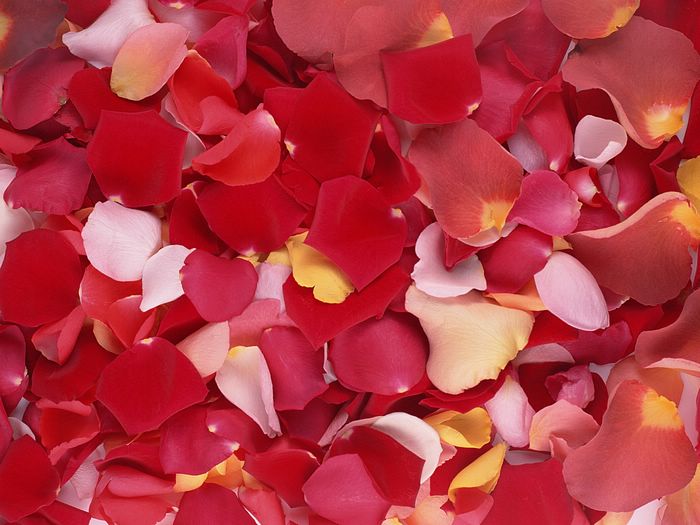 |
 |
 In
this technological age we live in, it's rare to see someone walking
without an iPod or some other music or media player strapped to them.
Listening to music or even watching a video is so commonplace that few
of us take the time to enjoy the stillness of our thoughts and the
interaction with our bodies that walking meditation allows. Even if
it's just one day a week, consider replacing one of your gym sessions
with a walking meditation session. Better still; take your walk outside
so you can enjoy the sounds of nature and your own thoughts and body
signals. In
this technological age we live in, it's rare to see someone walking
without an iPod or some other music or media player strapped to them.
Listening to music or even watching a video is so commonplace that few
of us take the time to enjoy the stillness of our thoughts and the
interaction with our bodies that walking meditation allows. Even if
it's just one day a week, consider replacing one of your gym sessions
with a walking meditation session. Better still; take your walk outside
so you can enjoy the sounds of nature and your own thoughts and body
signals.
Buddhist monks often use walking meditation as part of
their daily lives while they move dutifully from one task to another.
In addition to helping them develop mindfulness and loving kindness
while they travel around, walking meditation is also used as a kind of
meditation in its own right, with the monks scheduling time to walk up
and down a set course or even a circular track to help keep their
bodies at ease while also relieving tension that builds up over the
course of their service. Paying attention to the body as it moves also
helps them to be more in tune to it and, by extension, the world around
them.
Scheduling time for a sitting meditation can be difficult
for some, but since most everyone spends time walking each day, walking
allows for a kind of meditation that even the busiest people can fit
into their lifestyle, and you don't even have to walk slowly or in
nature to reap the benefits – all that's required is an attentive mind
and a willing body.
|
|
 |
 |
If
you've ever found yourself painting to deal with a difficult life
situation or sought out your potter's wheel for some stress relief,
you've experienced firsthand the healing power of art. How does art
heal? According to scientific studies, art changes one's physiology
from one of stress or anguish to one of deeper relaxation. This deeper
state of relaxation often results in increased levels of creativity and
inspiration. In fact, art actually changes the brain's patterns by
affecting the autonomic nervous system, the hormonal balance, and the
brain's neurotransmitters.

Even
world-renowned health center Mayo Clinic at Scottsdale uses art to heal
their patients. From abstract art to photography, nine different
galleries create a soothing, pleasant, and healing atmosphere for
patients. They also use music concerts and even small concerts at
patients' bedsides to draw upon the healing powers of the mind.
When
you view, listen, and/or create art or music, you're literally healed
from the inside out – blood flow increases to the organs and your
immune system begins operating more efficiently.
Spiritually,
art changes your perceptions of the world, which changes your attitude,
improves your emotional state, and even alters the way you perceive
pain - and usually, all for the better! The hope, perseverance, and
positivity yielded from art helps patients become better equipped to
cope with their physical, emotional, and psychological difficulties.
|
|
 |
 |
When
your child complains of nausea, do you head straight for the medicine
cabinet, or do you go to the kitchen to brew some chamomile tea? Even
though our culture seems to lean toward writing a prescription for
nearly every ailment, there are just as many alternative therapies
available. In fact, recent studies indicate that 30 percent of healthy
children and up to 50 percent of children with chronic ailments are
receiving some kind of alternative therapy. Alternative therapies may
be used in instances where over-the-counter or even prescriptions may
not have immediate success. Honey, for example, may be used in children
over one year old to ease the coughing that comes along with the common
cold.
When it comes to using alternative therapies to
complement traditional medicine, acupuncture, herbal or botanical
supplements, and other dietary supplements are the most common. Other
types of alternative therapies that are especially beneficial to
children include:
Probiotics. These are
bacteria similar to those found in the human stomach and can be found
in supplements or foods such as yogurt. When used to treat
antibiotics-related diarrhea, studies have shown probiotics can reduce
upset stomach one or two days sooner than time alone, making it
possible for children to go back to school up to two days earlier.

Tai chi. Mind and body therapies like tai chi help
children and teens reduce stress which, in turn, makes them less likely
to develop conditions such as anxiety and depression. Much like yoga,
tai chi helps decrease blood pressure and sympathetic activity in
children, allowing for a sense of relaxation, calm, and respect for
other people and the environment.
Yoga. When
combined with medicines prescribed by a physician, yoga can help young
asthmatic patients learn and practice deep breathing techniques while
remaining calm during bouts of shortness of breath. Yoga is also
helpful in dealing with behavioral disorders and reducing stress in
teens and adolescents.
Try and find a pediatrician who is
familiar with both traditional Western medicine and alternative
medicine so you'll have access to both options for your child.
|
|
 |
 |
 Biofeedback
is a method which teaches subjects to control bodily functions such as:
heart rate, blood pressure, headache, pain, and muscle tension through
a process which may include conditioning, feedback instrumentation,
behavior modification, and adaptation mechanisms. Biofeedback therapy
is one alternative medicine discipline available to help patients deal
with ongoing medical conditions without the invasive and sometimes
harmful aspects of surgical procedures or prescription drugs. Biofeedback
is a method which teaches subjects to control bodily functions such as:
heart rate, blood pressure, headache, pain, and muscle tension through
a process which may include conditioning, feedback instrumentation,
behavior modification, and adaptation mechanisms. Biofeedback therapy
is one alternative medicine discipline available to help patients deal
with ongoing medical conditions without the invasive and sometimes
harmful aspects of surgical procedures or prescription drugs.
Biofeedback
therapy feeds real time signals about bodily functions back to
patients, so they can be taught to alter bodily activities to minimize
or eliminate symptoms. Biofeedback has effectively treated a range of
ailments ranging from attention disorders to chronic pain and muscle
disorders. With biofeedback, the individual can increase awareness and
learn self-regulation of some bodily functions.
Scientists are
not able to explain exactly how or why biofeedback works, but there
does seem to be at least one common thread: most people who benefit
from biofeedback have conditions that are either brought on - or made
worse - by stress. For this reason, many scientists believe that
relaxation is the key to successful biofeedback therapy. When a body is
repeatedly stressed, internal processes like blood pressure become
overactive. But when guided by a biofeedback therapist, a person can
learn to lower his or her blood pressure through relaxation techniques
and mental exercises. When a person successfully relaxes and lowers
their blood pressure, the feedback signals reflect this accomplishment.
This acts as affirmation and encouragement for the person's continued
efforts.
In a normal biofeedback session, electrodes are
attached to the skin. These electrodes then feed information to a small
monitoring box that translates the physiological responses into a tone
that varies in pitch, a visual meter that varies in brightness, or a
computer screen that varies the lines moving across a grid. The
biofeedback therapist then leads the person in mental exercises.
Through trial and error, people can soon learn to identify and control
the mental activities that will bring about the desired physical
changes. Ideally, after an initial intense course of treatment, your
therapist will help you develop a transition plan so that you wean
yourself from office visits and move toward a home-based routine.
|
|
 |
| Include your contact information below |
Name
Phone

My Website
|
|
|
 |
|
In This Issue:
|
|
 |
|
Updates
|
|
Name
Phone
My Website

|

|
|
Flower Power: Flowers' Medicinal Properties
|
More
than just looking and smelling beautiful, many flowers have healing
properties, too. Here are some common varieties of flowers and their
healing capabilities:
Rose- Did you know that
bacteria die within five minutes of being in contact with rose petals?
This makes them a perfect natural medicine for treating skin diseases,
treating wounds and burns, and sometimes even alleviating itching due
to allergic reactions. But more than their remarkable antimicrobial
properties, roses also contain high amounts of calcium which assists
the metabolism, potassium which aids cardiac functioning, and iodine
that is essential for healthy thyroid functioning. Have a cold? Brew
some rose tea with boiling water and one teaspoon of dried rose petals
to fight colds, bronchitis, laryngitis, and various other ailments.

Sunflowers- Native
Americans used virtually every part of the sunflower for healing
purposes. To relieve rheumatism, pain and itching from poison ivy,
snakebites, and other sources of inflammation, they made a warm,
soothing liniment by simply boiling sunflower roots with water. The
seeds, which are high in Vitamin C and polyunsaturated fats, were used
as a diuretic to relieve the body of constipation, as well as chest
pains, ulcers, and even warts.
Pansy- This
small flower is known for its heart boosting abilities. More than
strengthening the heart, it's also used to treat common childhood
illnesses like measles, mumps, chickenpox and, in adolescence, acne.
|

|
|
Acai Berry Energy Bowl
|
|

Natives of the Amazon River Basin have long consumed the acai
(ah-sigh-ee) berry, a super food rich with nutrients and antioxidants.
The most common way to enjoy the acai berry is by blending it into a
health drink, like a smoothie or juice. The anthocyanins that give the
berry its power-packed nutritional value degrade quickly when at room
temperature or cooked, so it should always be refrigerated.
Ingredients:
1 cup fresh acai berries
8 strawberries (fresh or frozen)
1/4 cup plain yogurt
1/4 cup soy milk
1/2 teaspoon vanilla extract
1/2 cup granola
1/2 cup fresh berries or seasonal fruit
Directions:
1. In a blender, puree the acai berries, strawberries, yogurt, soy milk, and vanilla for 1 minute, until smooth.
2. Pour into a bowl and top with granola and fruit. Serve chilled.
|

|
|
Estheticians: Staying in Tune with Your Energy
|
The
next time you're getting a facial, why not get a massage at the same
time? Some estheticians are now offering massages at the same time
they're giving you a facial -- because you're skin is well-moisturized,
massage is much easier. After your facial and massage you'll feel
rejuvenated, relaxed, and refreshed, and your skin will have the
benefit of having been moisturized and firmed at the same time. A once
weekly facial will keep your skin radiant and beautiful, and you'll
enjoy the anti-wrinkle effects of well-balanced, oxygenated skin.
|
|
 |
